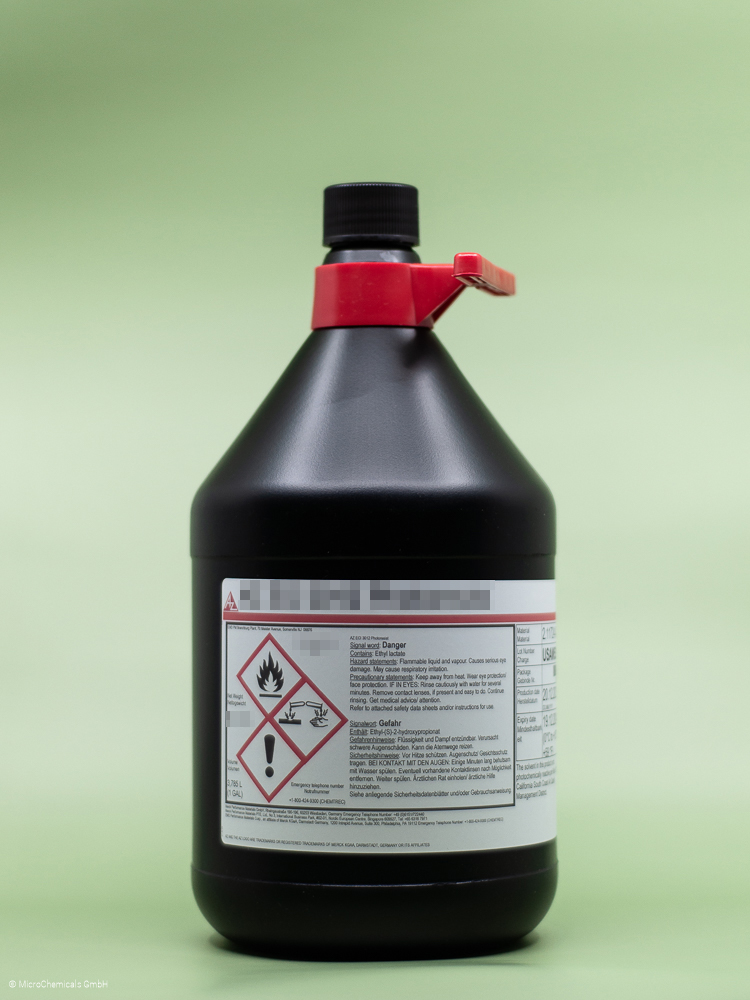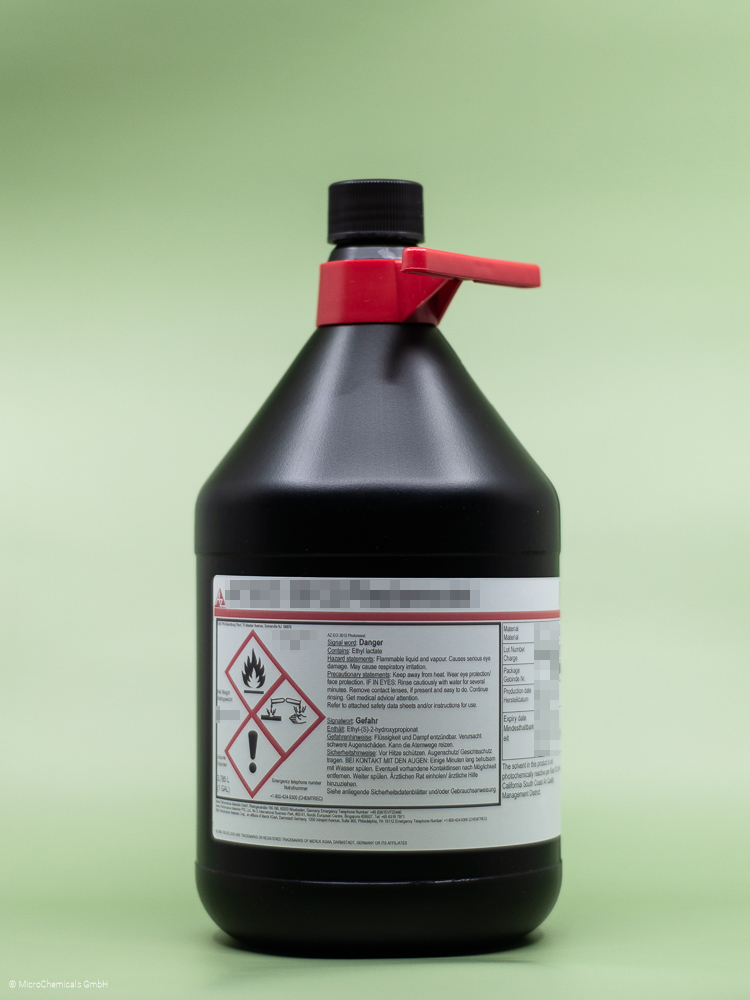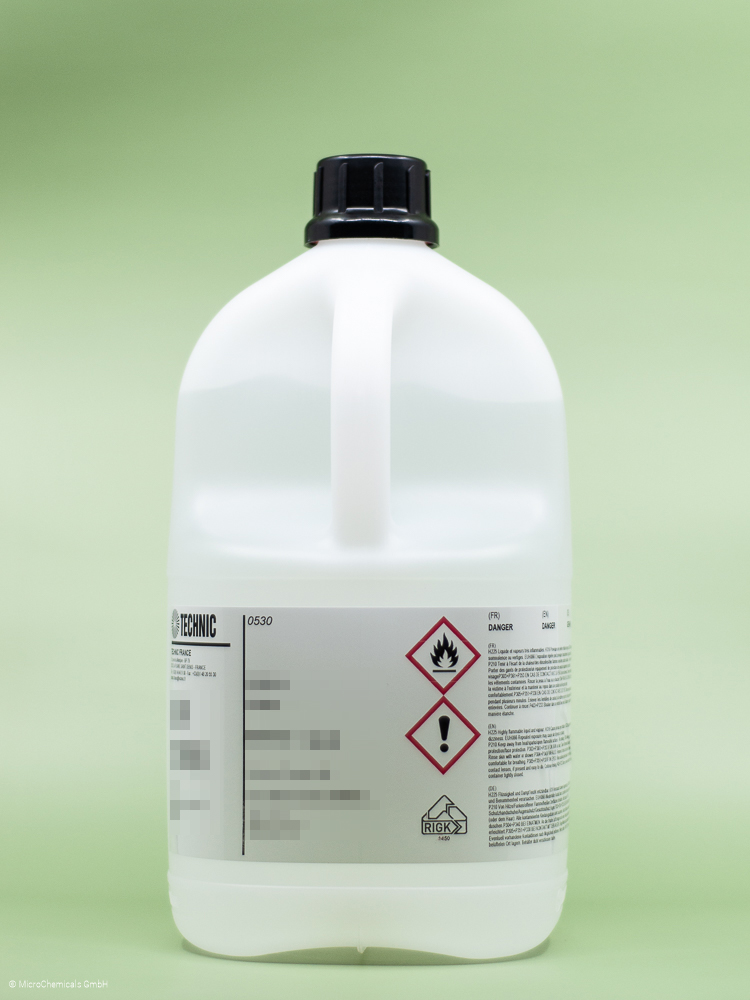AZ 125nXT-10B Photoresist - 3.785 l












Product information "AZ 125nXT-10B Photoresist - 3.785 l"
AZ® 125nXT-10B
Ultra-Thick Negative Resist for Plating
General Information
The AZ® 125nXT-10B is an i-line sensitive, negative ultra-thick resist with steep resist sidewalls and high aspect ratio.

20 µm lines at 60 µm resist film thickness.

15 µm holes at 60 µm resist film thickness.

80 µm plated CuNi image.
Product Features
The ultra-thick negative resist AZ® 125nXT-10B covers a resist film thickness range of 20 - 50 µm and can be built up and processed to 100 µm and much more with adapted spin profiles. AZ® 125nXT-10B is only i-line sensitive and, as a special feature (for negative resists), does not require a post exposure bake after exposure for cross-linking, i.e. the AZ® 125nXT-10B photopolymerizes. Due to its low absorption, even very thick resist layers can be easily exposed and steep resist sidewalls can be achieved. This and its very good adhesion to all common substrate materials make this resist suitable for the galvanic molding of thick to very thick layers as well as DRIE. With low exposure doses or very thick resist layers - related to the respective resist film thickness - the resist profile becomes slightly negative, since the resist areas close to the substrate experience less cross-linking. If the electroplating process shows that these weakly cross-linked areas of the resist are attacked, but a higher structuring exposure dose is not an option, flood exposure (without a photomask) after development with very high doses can cross-link the resist sidewalls even near the substrate, which, however, makes it more difficult to strip the resist later. Even after such flood exposure, no further post exposure back is necessary. AZ® 125nXT-10B can generally be processed with resist films of less than 20 µm thick, but processing becomes problematic below 10 µm thickness: Since the additive responsible for cross-linking escapes from the resist surface during softbaking, only a few micrometers of the exposed resist surface are removed during development, which accounts for a correspondingly large proportion of the total thickness in the case of thin resist films.
Developers
AZ® 326 MIF (immersion development), AZ® 726 MIF (puddle development) or AZ® 2026 MIF (which has an additive that promotes residue-free development, especially with cross-linking resists) are recommended for developing the AZ® 125nXT-10B. KOH- or NaOH-based developers such as AZ® 400K or AZ® 351B are generally not suitable for the AZ® 125nXT-10B. If TMAH-based developers cannot be used, a KOH-based developer in higher concentration than usual can be considered.
Removers
AZ® 125nXT-10B can be removed wet-chemically using conventional strippers, but stripping very thick cross-linked resist structures can be quite a challenge. If organic solvents are preferred for this, (hot) DMSO is recommended, which does not dissolve cross-linked resists, but can detach them from the substrate after a certain exposure time. This process can be accelerated by reducing the degree of cross-linking of the resist near the substrate by using a lower exposure dose. Alternatively, high-performance strippers such as the NMP-free TechniStrip P1316 are recommended, or in the case of alkaline-sensitive substrate materials (such as aluminum), the TechniStrip MLO 07.
Thinning/ Edge Wall Removal
If the resist is to be diluted for spin coating, PGMEA = AZ® EBR Solvent is an option. PGMEA is the solvent for AZ® 125nXT-10B anyway and is also recommended for edge wall removal if necessary.
Further Information
Our safety data sheets and some of our technical data sheets are password-protected.
You will receive the access data after completing the form.
The access data for the data sheets are not your login data from our shop!
MSDS:
Safety Data Sheet AZ® 125nXT-10B english
Safety Data Sheet AZ® 125nXT-10B german
TDS:
Technical Data Sheet AZ® 125nXT-10B english
Application Notes:
Further Information about Photoresist Processing
Related products
Developer
Remover
























